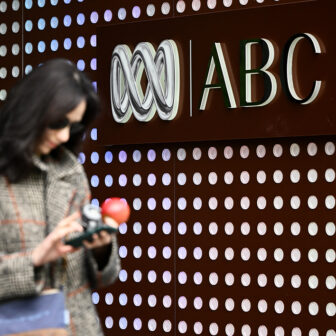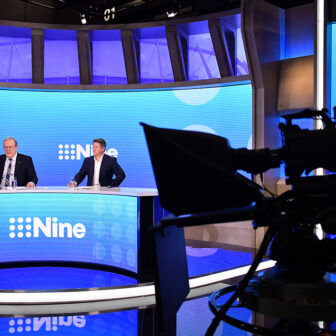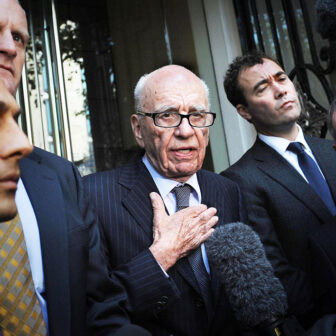WHILE Sophie Black, Eric Beecher, various folk at the Australian, Matthew Ricketson, Margaret Simons and others have at various times declared the Australian Financial Review/afr.com business strategy to be “disastrous” (or words more colourful to that effect), I can’t recall any of them asking me about it. I do recall that after one of his more exotic colleagues beat me up on The Drum, Alan Kohler wrote to concede that the afr.com paywall strategy was “vindicated.” (Though I can’t recall that Alan or any of his colleagues has asked me about it either.)
We hear much about the “brand” and audience that is built by going online. By implication, people seem to assume that this is valuable. Generally it’s not. Which is why so many publishers have taken lately to trying paid content models. The reason traffic does not make money? At first, it was because the audience was not what advertisers would pay for. When people talk of millions of page views they’re talking about eyeballs from everywhere, a fraction of whom might want the advertiser’s Ford in Footscray. By itself, that discounted pricing. Publishers used auto refresh and other gimmicks to pump traffic, which ultimately encouraged price pressure too. Inventory was infinite. Then along came Google Adsense and dollars became cents.
When you get stuff for free, you get what you pay for. And that’s why news resources are pressured. The Australian Financial Review’s approach was different for two reasons: first, the business of the AFR had always relied heavily on pricing, including especially cover price revenue. Its niche is small in number, but valuable. The second reason was that our research consistently delivered a clear message: the product and its content were the key to the digital business.
The AFR has been profitable for all of the past fifteen years and in some of those years its profits were record numbers. In that time the Financial Times, the Wall Street Journal, the New York Times and many others have reported losses. Even during the global financial crisis, which has had huge impacts on the reading audience and advertisers, the AFR made profits – while investing heavily in its multimedia. While other newspapers have had regular redundancy rounds, the AFR had none. In fact its editorial staff expanded, with an emphasis on specialised staff.
One of the reasons the AFR is stable is that its audience has always paid a full price for the content. The newspaper is $800 a year. There were no discounts other than to university students.
The AFR measures its audience and engagement using independent analysts. Its engagement level in the target audience was much greater than for the FT in Britain or the WSJ in the United States. This was a consistent result, but the AFR measure rose during the GFC. Internal tracking research over many years indicated that price was not a major factor in the buying decision. The audience is busy (or “time poor”) – it wants relevance and reliability. That same research showed consistently that the web requirement was for more content: specialised content relevant to reader interests. It also showed that readers were wedded to the print product.
AFR advertising is heavily skewed to print because a large part of it relies on print display for brand effects. For that reason, much of the revenue cannot migrate online. AFR advertising rates have been steady or rising in print for more than a decade. This may be unique in the industry. AFR digital advertising carried a heavy premium based on its audience, which might also be a unique characteristic. AFR user traffic has been strong and growing, despite the paywall and the fact that no devices such as auto refresh were ever applied.
Contrary to some popular views, the content on afr.com always included elements that were free. A lot of new content and videos were open for sampling. But the goal was to sell subscriptions, not to promote traffic. From the time that afr.com was launched the surveys showed no sign that price was an issue. Rather it was content value: the readers wanted more, but mainly material that was specialist.
When the AFR installed a full state-of-the-art multimedia production system in 2010, the business became media neutral. From that time the AFR was able to produce to any medium at any time. Through its new efficiencies it was able to ramp up content in all the specialised areas, including video. This coincided with a sharp rise in subscriber numbers. By March 2011 afr.com subscribers had reached more than 7000 and were growing at more than 50 per cent a year – despite the impact of the GFC, which had eroded the print numbers to the mid 70,000s.
While I’m no longer responsible for the AFR or afr.com, I do think it’s in the community’s interests to get some facts into these debates. My point essentially is that people will pay for a news media product that they value. If there are enough of them, you have a viable business. Anything else is tosh.
I think people do place a quite high value on trusted, relevant sources of news about their interests. I’m not sure that many commentators have looked hard at what that means.
Finally, Andy Groves of Intel once said famously that only the paranoid survive. He also said that he who commoditises last, wins. In news media, too few are paranoid and too many have commoditised too readily.




